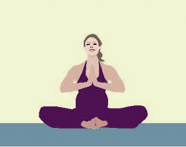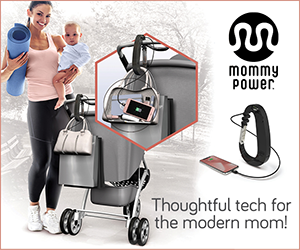Ways to Destress During Pregnancy

It’s not just important to physical and mental wellbeing to relax in pregnancy, it’s a positive health command, as stress has been linked with premature birth, low birthweight, and infant behavioral problems. To relax is easier advised than done, however, when each tuna steak or cup of coffee holds private qualms and public disapproval. These tips may help.
Give yourself a break
If you feel tired, tearful, nauseous, or ravenously hungry, see it as a sign of stress. Stop to nap, snack or have a walk. If you sit a lot at work, stretch your arms and legs each hour to avoid back and neck pain, swollen ankles, and carpal tunnel syndrome.
Get informed
Assuage health worries by enrolling in active birth or parenting classes, and talking to your doctor or midwife. Is there a helpline or drop-in clinic at the maternity ward? Visit where you plan to give birth with your partner or birthing supporter.
Nap in the afternoon
In the first and third trimesters, many women need a rest after lunch and after work. Don’t feel guilty: you’re doing what’s best for your baby. by everything, have a sniff—this oil helps to calm emotions and rebalance the nervous system.
Stop working
Many of us work more in pregnancy, rushing to set up or finish projects to keep things going in our absence. By 32 weeks, try to stop work (the organs, spine, and joints are under stress). If you work more, an early labor is more likely. Spend time with your partner and children and building social support networks.
Let others look after you
In some countries, pregnant women are cosseted by family and friends and urged to take it easy in the belief that this calms the baby. Let others in: shed the bubble of individuality that cocooned you before pregnancy.
Restorative rosemary
Place 2 drops of essential oil of rosemary on a handkerchief. At times when you feel overwhelmed
Using flower essences
Flower essences are perfect as they are safe for the baby and rebalancing for the mother, restoring equilibrium.
Do exercise
Exercising triggers the release of endorphins—feel-good hormones, and in pregnancy it makes you more upbeat and energetic, and less prone to insomnia and stress. It also aids the cardiovascular system, helping you to cope with an increased blood volume and weight gain, and easing backache and leg cramps. Women who exercise in pregnancy seem to require less intervention and pain relief in labor and get back in shape quicker afterward. Check with your doctor first, then try 30 minutes of gentle exercise each day.
Go swimming
Supportive but resistant, relaxing yet energizing, swimming is the perfect exercise in pregnancy, allowing effortless movement. Aim for a 20-minute swim 3–6 times a week. If you can’t swim, try an aquanatal class or a water fitness session (tell the instructor you are pregnant). In an American study, women who exercised in water in pregnancy had lower heart- and blood-pressure rates than women who exercised on land and their babies’ heart rates were lower too.
Moderate your stroke
In pregnancy, it is harder to swim breaststroke with your head raised, which arches the lower back and the neck. Practise long strokes with the head down (wear goggles) and spine long; bend the knees, and keep them wide. Breathe every two strokes. In late pregnancy, when changing arms can unbalance you in backstroke, try breaststroke legs or circle both arms.
Floating
The pregnant body is very buoyant: lie with your head back and let go. (Use supporting floats or a “noodle” if needed.) Form a star, join the soles of your feet or stretch the arms and legs away, palms touching behind the head. Slowly inhale and fill the lungs, then exhale slowly. This helps you let go, trusting the water and your breath—vital in labor.
Do yoga
There is no form of exercise more suited to pregnancy than yoga. There are obvious physical benefits: yoga opens the pelvis, hones posture and balance, teaches deep breathing, and strengthens core muscles that support the spine and legs to assist labor. Above all, it helps you to focus within and to connect with your baby, which is reassuring amid all the changes. Ask your midwife about special prenatal classes.
Baddha Konasana by a wall
Sit on a cushion with the back of the pelvis, shoulders, and head against a wall. Join the soles of your feet and relax your knees. If the groin muscles are strained or you have a pubic symphisis, support the knees with cushions. Close your eyes and breathe.
Go online
Many women share your fears. Join pregnancy websites for support and stress-easing laughs. Visit the pregnancy forums on www.cafemom.com.
Start making new friends
Pregnancy is a time to cultivate some new friends who can support you through the disorientating “baby” months. Active birth and pregnancy yoga or swimming classes are good places to recruit, as well as prenatal clinics.
Indulge guilty pleasures
You can’t be good all the time. Many midwives recommend an occasional treat, such as chocolate, to lift your mood. Just don’t worry afterward.
Enjoy sartorial freedom
For the first time since adolescence, feel the freedom that comes with escaping the tyranny of the waistband and fashion trends. You are pregnant and meant to be big, and it’s beautiful. Flaunt your new cleavage, enjoy the womanliness of your big butt, and buy a caftan (but only if it’s in this season!).
Stop listening to others
If you feel like public property— stopped in the street to be lectured, or told birth horror stories—try not to get too stressed. It can help to act inane—smile and change the subject vaguely—or walk away like you never heard. Mix more with people you trust who respect you.

Excerpt from 1001 Ways to Relax by Susannah Marriott, DK Publishing, 2008




